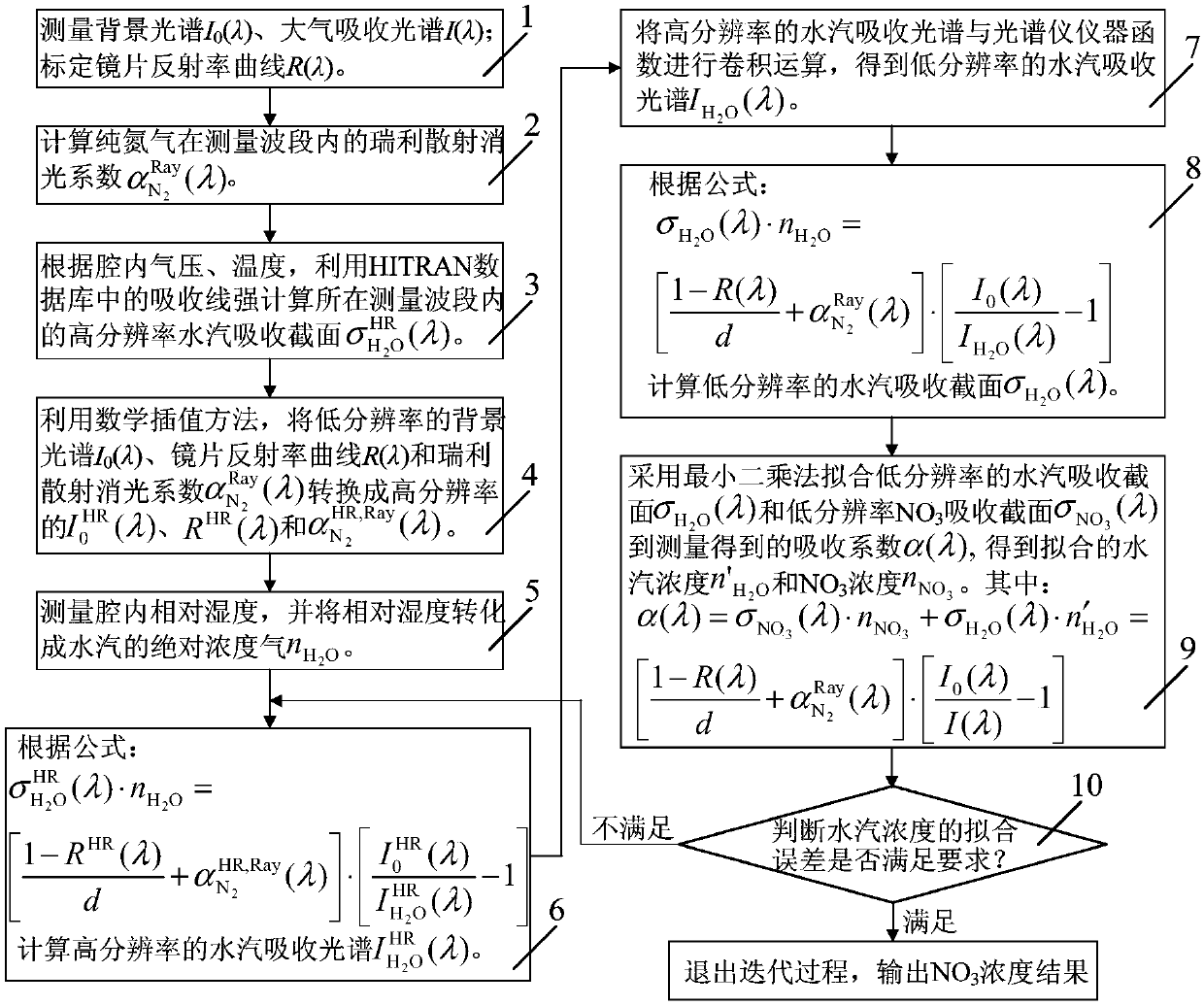Method for improving sensitivity for detecting NO3 in atmosphere by deducting vapor interference
A sensitivity, water vapor density technology, applied in the direction of color/spectral characteristic measurement
- Summary
- Abstract
- Description
- Claims
- Application Information
AI Technical Summary
Problems solved by technology
Method used
Image
Examples
Embodiment Construction
[0048] Such as figure 1 As shown, the present embodiment improves the IBBCEAS technology to detect atmospheric NO by deducting water vapor interference. 3 There are 10 steps in the method of sensitivity, that is, step 1 to step 10.
[0049] In step 1, nitrogen (purity is 99.999%) is charged in the cavity of the optical cavity, and the spectral signal output by the optical cavity is recorded with a spectrometer to obtain I 0 (λ); the actual atmosphere is pumped into the optical resonant cavity, and the spectral signal output by the optical resonant cavity is recorded with a spectrometer to obtain I(λ). When calibrating the reflectivity curve R(λ) of the lens, the cavity is filled with nitrogen and helium with a purity of 99.999% respectively, and the R(λ) and R( λ) is specifically calculated by formula (1):
[0050] R ( λ ) = 1 - I ...
PUM
| Property | Measurement | Unit |
|---|---|---|
| length | aaaaa | aaaaa |
Abstract
Description
Claims
Application Information
 Login to View More
Login to View More - R&D
- Intellectual Property
- Life Sciences
- Materials
- Tech Scout
- Unparalleled Data Quality
- Higher Quality Content
- 60% Fewer Hallucinations
Browse by: Latest US Patents, China's latest patents, Technical Efficacy Thesaurus, Application Domain, Technology Topic, Popular Technical Reports.
© 2025 PatSnap. All rights reserved.Legal|Privacy policy|Modern Slavery Act Transparency Statement|Sitemap|About US| Contact US: help@patsnap.com



